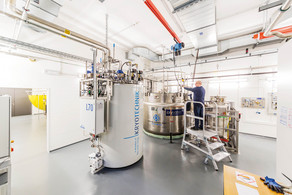Raman spectroscopy in biomedicine - Spectroscopic analysis with a focus on cancer and cardiovascular diseases
- Colloquium

Non-destructive and non-labelling linear and non-linear optical imaging using various Raman spectroscopic techniques has proven its successful application in molecular biology and biomedicine. Especially in cancer and cardiovascular diseases, which are often associated and carry a high risk of mortality, Raman spectroscopy enables disease diagnosis and analysis of different developmental stages. Based on the multitude of spectral information of microscopic 2D and 3D Raman imaging of biopsies, blood or cells, possible associated disease progression and the success of a corresponding therapy can be followed in detail and additionally time-resolved. New technical developments in confocal Raman microspectroscopy, coherent anti-Stokes Raman scattering (CARS), second harmonic generation microscopy (SHG) and other spectroscopic and microscopic techniques have contributed to the further optimisation of treatment strategies for patients and to a better understanding of the common features of these diseases. The contrast of Raman imaging of tissue or individual cells is based on the inelastic scattering of light by the samples, which - similar to optical spectroscopy in solid-state physics - is caused by the change in rotational and vibrational modes of functional groups. The complex structures of biomedical samples provide the disease-related structural information as so-called "molecular fingerprints", but require extensive data preprocessing and multistatistical analysis.
The development and application of modern Raman spectroscopy, which has become a crucial method in the diagnosis and therapy of cancer, cardiovascular and various metabolic diseases, and is also used in monitoring disease-related biomolecular changes during different disease stages, as well as in the therapy and control of drug treatments and drug toxicity, will be discussed in this lecture.









